Discover 11 hidden attractions, cool sights, and unusual things to do in Tokorozawa (Japan). Don't miss out on these must-see attractions: Seibuen Yuenchi, Seibu Dome, and Tokorozawa Aviation Museum. Also, be sure to include Tokorozawa Aviation Memorial Park in your itinerary.
Below, you can find the list of the most amazing places you should visit in Tokorozawa (Saitama).
Table of Contents
Seibuen Yuenchi
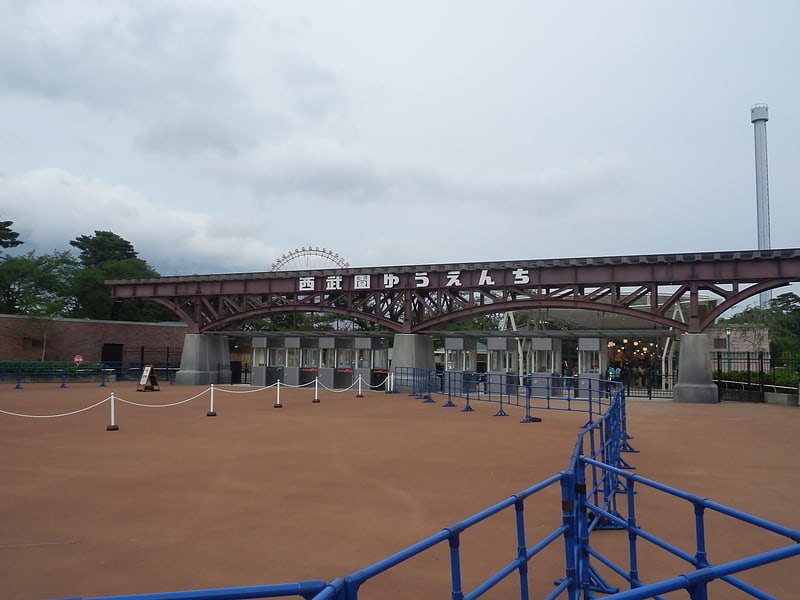
Seibu-en is an amusement park located near Tokyo in Tokorozawa, Saitama Prefecture. It is just outside the Seibuen-yūenchi Station, which is also owned and operated by the Seibu Railway. The park underwent a significant expansion and redesign for the 2021 season, focused around a Showa-era themed marketplace, a Godzilla motion simulator attraction, and a children's area based on the work of Osamu Tezuka.[1]
Seibu Dome

Also known as: 西武ドーム
Stadium in Tokorozawa, Japan. Belluna Dome is a baseball stadium located in Tokorozawa, Saitama, Japan. It is home to the Saitama Seibu Lions, a professional baseball team.
The stadium has a roof over the field and the stands, like other indoor ballparks. However, it lacks a wall behind the stands so that natural air comes into the field. This makes it possible for home runs to leave the stadium, something not possible in typical domed stadiums.
The stadium was built in 1979 without the roof and named Seibu Lions Stadium (西武ライオンズ球場, Seibu Raionzu Kyūjō) as the new home field of the Lions that moved from Fukuoka to Tokorozawa that year. The installation of the roof took place in two phases: the first phase after the 1997 season, and the second phase after the 1998 seasons. At the beginning of the 1998 season, the stadium was renamed Seibu Dome although the domed roof had not completed yet.
Originally, the Lions had planned to build a new stadium in Odaiba, but due to requiring to get approval from the three other Tokyo based teams at the time (the Nippon-Ham Fighters, the Yomiuri Giants, and the Yakult Swallows), opposition from local fans, and the cost to build a new stadium, they decided to just add a roof to the stadium.
On March 1, 2005, the stadium was named Invoice Seibu Dome (インボイスSEIBUドーム, Inboisu Seibu Dōmu) as Invoice Inc. bought the naming rights of the stadium for the next two seasons. Upon expiration of the previous contract, on January 1, 2007, the name was changed again to Goodwill Dome (グッドウィルドーム, Guddowiru Dōmu) to reflect the sponsorship of Goodwill Group, Inc. The naming rights contract with Goodwill was intended to remain in effect for five years.
Although Seibu Dome was still the official name of the stadium, the stadium and media used the sponsored name almost exclusively during this period. However, at the end of 2007, Goodwill's naming rights for both the stadium and team were seized due to Goodwill's illegal business movements. The dome's name was restored to Seibu Dome in 2008. On January 16, 2017, MetLife, a New York City-based financial institution, purchased naming rights for five years. On March 1, 2022, Belluna, a mail order company out of Ageo City, Saitama Prefecture, bought the naming rights to the stadium after MetLife's naming right deal expired.
The stadium is located in front of Seibukyūjō-mae Station, the terminal station of the Seibu Sayama Line railway (a branch of the Seibu Ikebukuro Line connecting Tokorozawa with Tokyo) and the Seibu Yamaguchi Line people mover. Both lines are operated by Seibu Railway, the owner of the stadium and the Lions.
Queen performed at the stadium for their Hot Space Tour in 1982. New Japan Pro-Wrestling held the finals of the 2014 G1 Climax on August 10, 2014, at the arena.[2]
Address: 2135 Kamiyamaguchi, 359-1153 Tokorozawa
Tokorozawa Aviation Museum
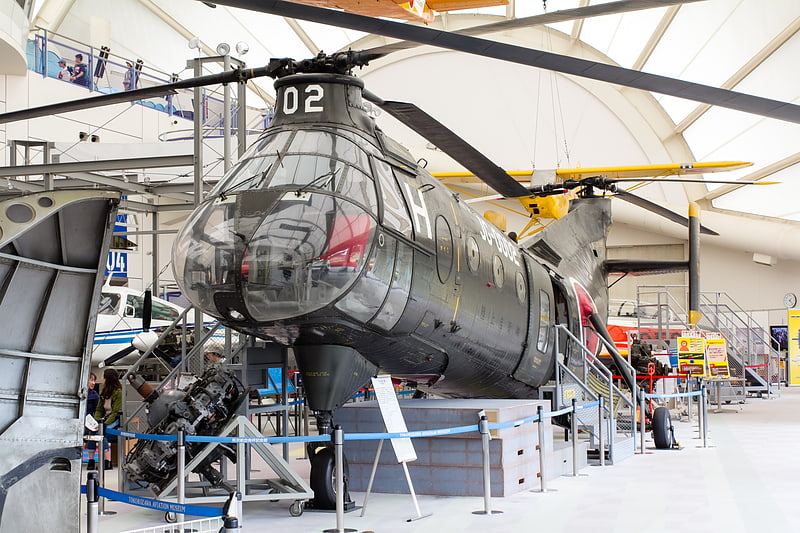
Also known as: 所沢航空発祥記念館
Museum in Tokorozawa, Japan. The Tokorozawa Aviation Museum is a museum located in the city of Tokorozawa, Saitama dedicated to the history of aviation in Japan. It contains aircraft and other displays and an IMAX theatre. Located on the site of Japan's first airfield which started operations in 1911 with a flight by Yoshitoshi Tokugawa, the original single runway is still visible and has been incorporated into a larger multifunction park adjacent to the museum. It is located in the Tokorozawa Aviation Memorial Park.[3]
Address: 1-13 Namiki, 359-0042 Tokorozawa
Tokorozawa Aviation Memorial Park
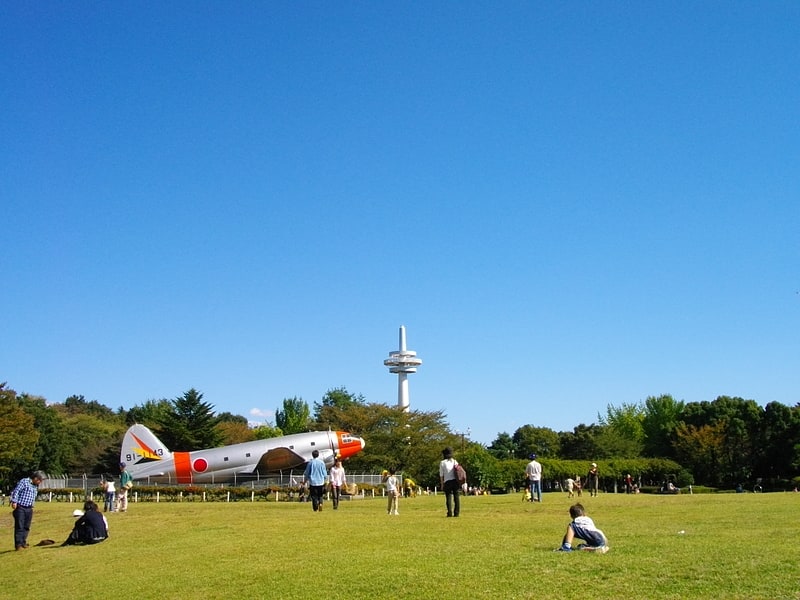
Also known as: 所沢航空記念公園
Memorial park in Tokorozawa, Japan. Tokorozawa Aviation Memorial Park is a park located in Tokorozawa, Saitama Prefecture in Japan. It contains the Tokorozawa Aviation Museum.[4]
Address: 1-13 Namiki, 359-0042 Tokorozawa
Tokorozawa Civic Cultural Centre Muse
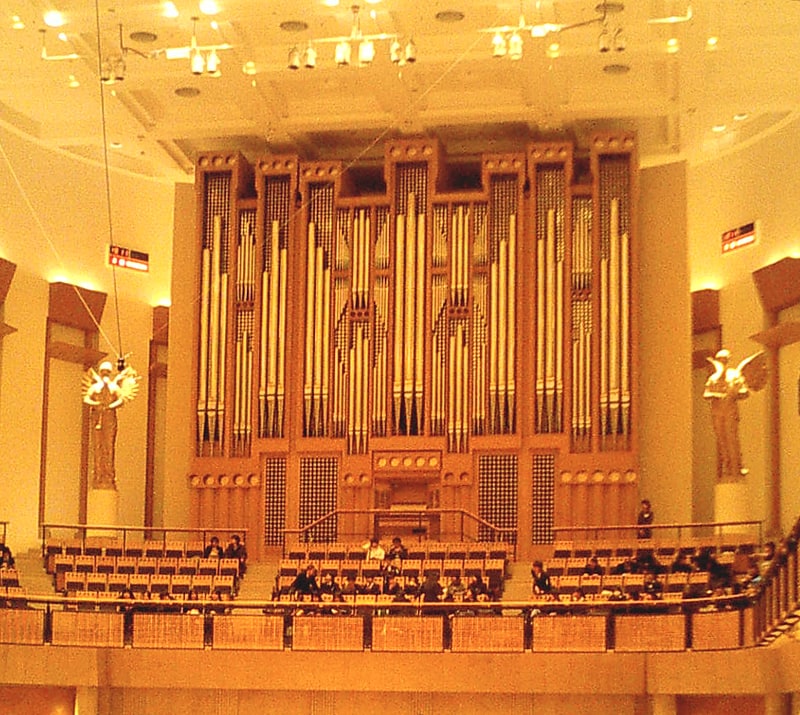
Also known as: 所沢市民文化センター ミューズ
Concert hall in Tokorozawa, Japan. Tokorozawa Civic Cultural Centre Muse is a concert hall complex consisting of the main "Ark Hall", with a pipe organ, and other facilities, located in Tokorozawa, Saitama, west of Tokyo, Japan. It opened in 1993, and is operated by the Tokorozawa Cultural Foundation. It is also called "Tokorozawa Muse", or sometimes just "Muse" for short.[5]
Address: 1-9-1 Namiki, 359-0042 Tokorozawa
Arahata Fuji Shrine

Arahata Fuji Shrine is a Shintō shrine in Tokorozawa city, Saitama Prefecture, Japan. It is noteworthy as a scale reproduction of Mount Fuji that can be easily climbed and offers views of the actual Mount Fuji and surrounding areas from the top.[6]
Tokorozawa Shinmei Shrine
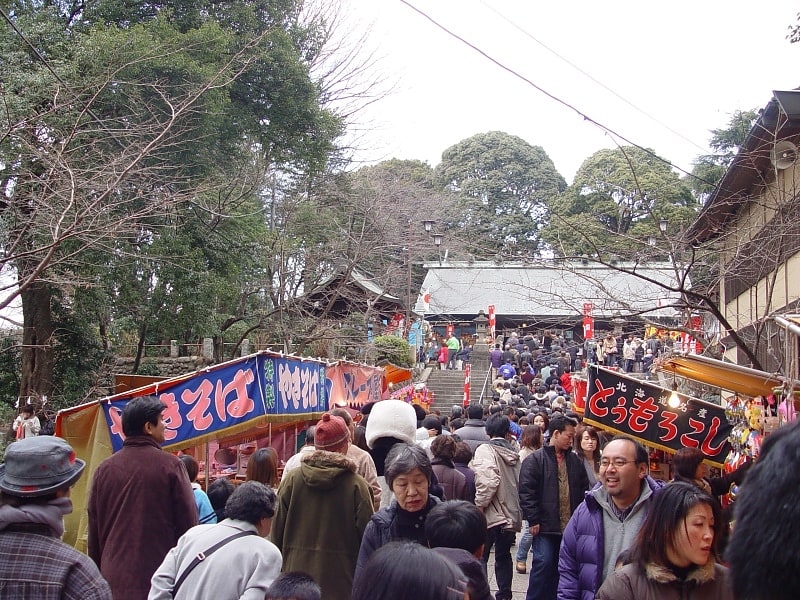
Also known as: 所澤神明社
Shinto shrine in Tokorozawa, Japan. Tokorozawa Shimei Shrine is a Shinto shrine in Tokorozawa, Saitama, Japan.[7]
Address: 1-2-4 Miyamotocho, 359-1143 Tokorozawa
National Hansen's Disease Museum
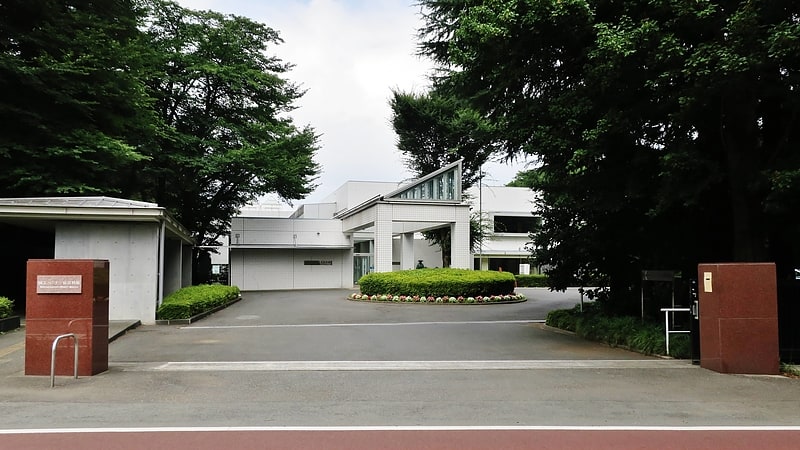
Also known as: 国立ハンセン病資料館
Museum in Higashimurayama, Japan. The National Hansen's Disease Museum is a museum in Higashimurayama, Tokyo, Japan that is dedicated to education about Hansen's disease and to eliminate discriminatory practices against its sufferers. It was formerly named "His Imperial Highness Prince Takamatsu Memorial Museum of Hansen's Disease".
The museum's purpose, located next to one of Japan's remaining leprosy sanatoriums, is to:
- To promote awareness of leprosy
- To represent and preserve the history of leprosy in Japan
- To show what persons affected by leprosy have achieved
- To help restore the dignity of persons affected by leprosy
- To demonstrate the importance of human rights and the linked need to end prejudice and discrimination
Address: 4-1-13 Aobacho, 189-0002 Higashimurayama
Hachikokuyama
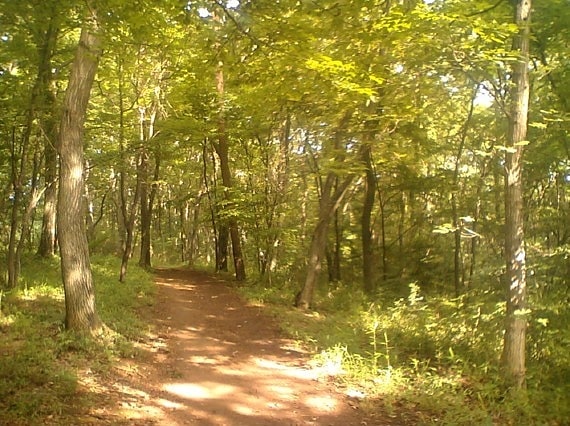
Also known as: 八国山緑地
Park in Higashimurayama, Japan. Hachikokuyama is a ridge and park in Higashimurayama, Tokyo along its border with Tokorozawa, Saitama. Its name translates literally into English as "Eight Country Mountain" since in times past, one could view the eight surrounding provinces surrounding Musashi Province from its top. In Japanese it is known as a ryokuchi instead of a park. Ryokuchi literally means "green land" and denotes land used more as a natural setting instead of a typical park.
The park lies upon a low rising ridge rising about 15 to 20 meters above the surrounding plain. The highest elevation is about 100 meters above sea level. Measured from north to south, the park is from 100 to 300 meters, the park having an uneven size. From east to west the park is about 1.5 kilometers. The trail that runs the length of the ridge top is about 2.0 kilometers and branches into many secondary trails. The total size of the park of is about 39 hectares or about 96 acres.[9]
Shōfuku-ji
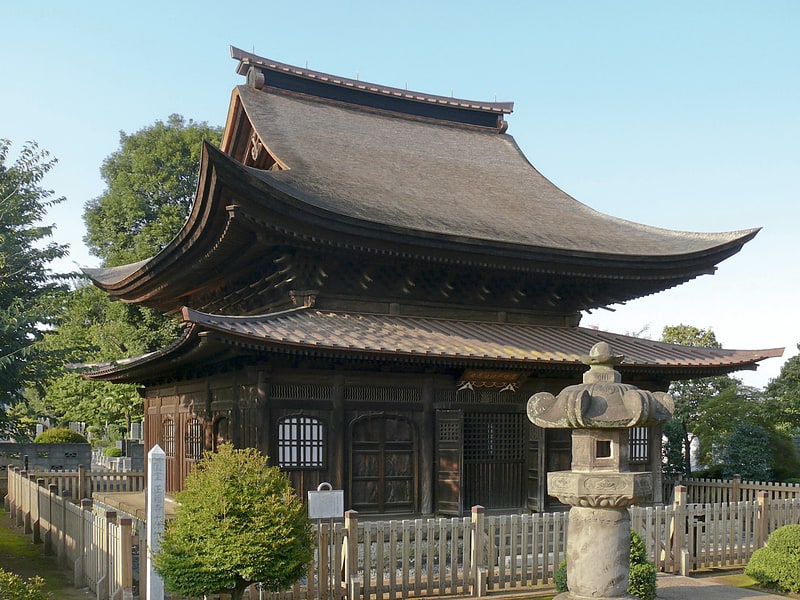
Also known as: 正福寺
Temple in Higashimurayama, Japan. Shōfuku-ji is a Rinzai Zen Buddhist temple in Higashimurayama, Tokyo, Japan. Its early 15th century Jizō hall is a registered National Treasure of Japan. It is considered to be the oldest intact building in Tokyo Prefecture and a unique example of Kamakura period architecture.[10]
Taki-no Castle
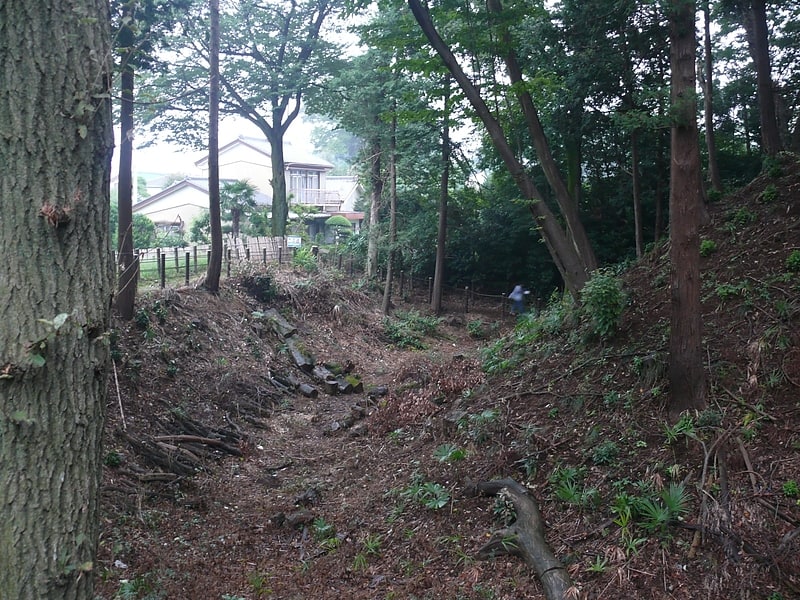
Also known as: 滝の城
Park in Tokorozawa, Japan. Taki-no Castle is a flatland-hilltop Japanese castle ruin located in Tokorozawa, Saitama Prefecture. It was on a key route between the northern Kanto Plain and Hachioji.
The most recent structure was built in the 15th century by Ōishi Sadahisa and existed during the 16th-century Sengoku period of Japanese history. In 1546, the Hojo of Odawara took control and in 1569 possession passed to the Takeda. Then Go-Hōjō clan expanded and improved the defences of the castle.
After 1590, the castle was abandoned simultaneously with the arrival of Tokugawa Ieyasu into the region, having outlived its purpose.
The castle is now a ruin, with clear archeological evidence of the foundations of a number buildings and a dry moat. The castle name "Taki-no-jō", which literally means "waterfall castle", is due to a waterfall that exists on the eastern part of the castle grounds. The castle grounds now form a recreational park including walking paths, a children's play area and a baseball field. The park is called Taki-no-jō Castle Site Park (滝の城址公園, Taki-no-jō-shi Kōen).[11]